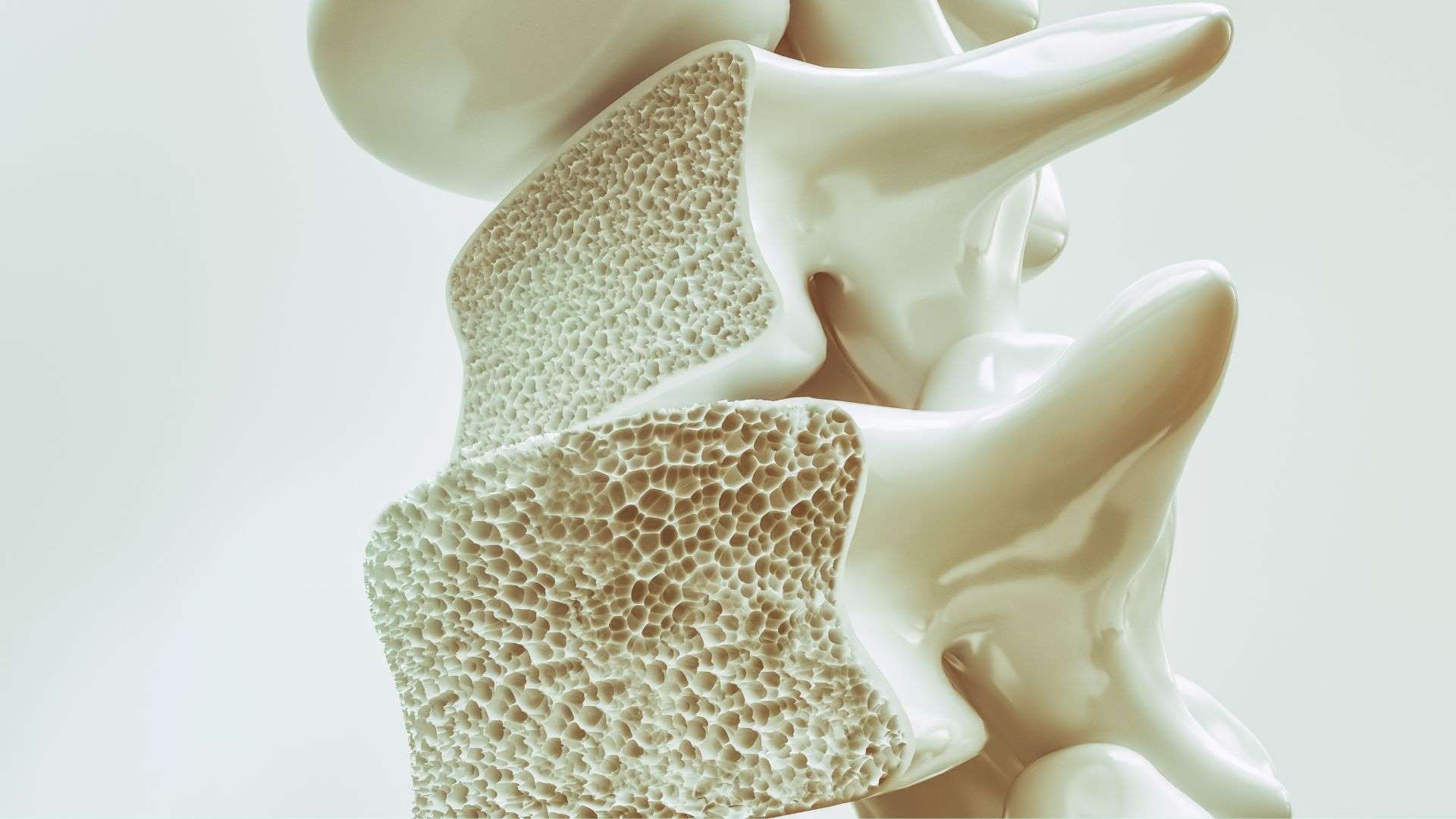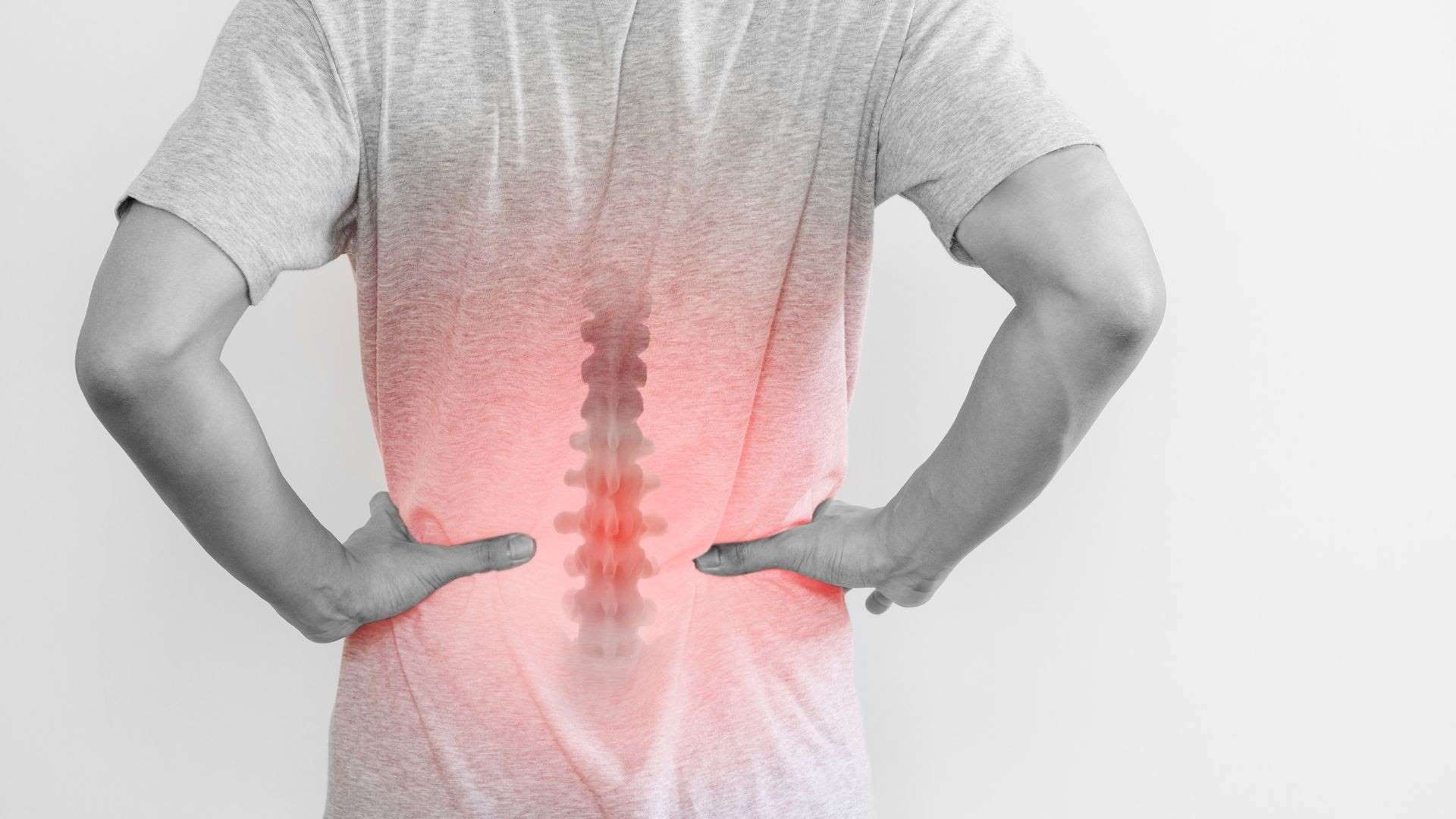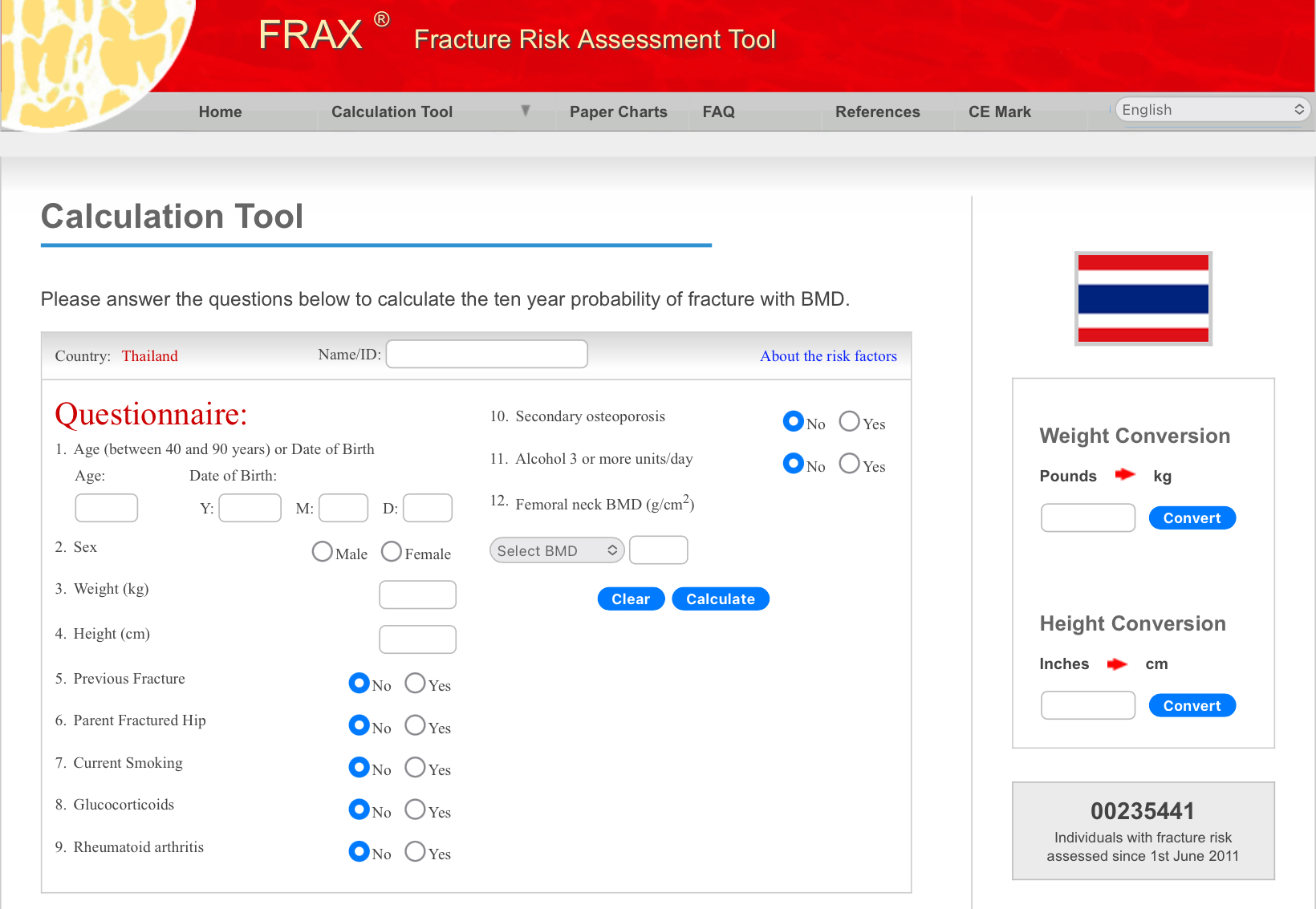
Osteoporosis is a silent and dangerous disease that often shows no symptoms until a fracture occurs. It is a condition where the density of bones decreases, making them more susceptible to breaking even with minor trauma. The most common sites of fracture are the hip and spine, which might raise the risk of death, disability, and reduced ability to perform daily activities.
The annual incidence of hip fractures among individuals aged 50 and above in Thailand is 289 per 100,000 females and 114 per 100,000 males. This figure rises to 1,011 per 100,000 women who have reached the age of 75.
Who Should Be Screened for Osteoporosis?
- Women over 65 years old and guys over 70 years old.
- Women who have gone through menopause before the age of 45, including those who have had both ovaries removed.
- Women with low estrogen levels for more than 1 year before menopause, excluding pregnancy and breastfeeding.
- Individuals under 65 years old for women or under 70 years old for men with any of the following risk factors:
- History of fragility fracture.
- Parent with a hip fracture from a minor trauma.
- Body mass index (BMI) less than 20 kg/m2
- Height loss of 4 cm. or more compared to the highest recorded height, or 2 cm. or more from two height measurements.
- Taking medications that cause rapid bone loss, such as Prednisolone 5 mg/day or equivalent, for 3 months or more.
- Women receiving aromatase inhibitor therapy for breast cancer or men receiving androgen deprivation therapy for prostate cancer.
- X-rays showing signs of bone thinning or spinal deformity from vertebral fractures.
- Before starting osteoporosis medication and monitoring 1-2 years after treatment.
- Undergo screening for bone mass loss if the doctor deems it necessary due to other conditions that may contribute to this condition.

Osteoporosis Screening Methods:
- Bone densitometry with DXA scan
- Fracture Risk Assessment Tool (FRAX)
DXA scan (Dual Energy X-Ray Absorption) is a low-dose radiation screening method that uses less radiation than a chest X-ray. It does not require fasting or food restriction, takes only 10-15 minutes, and is the World Health Organization (WHO) standard for diagnosing osteoporosis.
Precautions:
- Pregnant women or those who received radiation three days before the examination. Please inform the doctor before the procedure.
Fracture Risk Assessment Tool (FRAX) is a tool that calculates the 10-year risk of hip fracture and major osteoporotic fracture (spine, hip, forearm, wrist) in patients aged 40-90 years who have not received osteoporosis medication. It can be calculated from risk factors such as age, gender, BMI, smoking, alcohol consumption, and medical history. Fracture Risk Assessment Click

Interpretation of T-Score:
To provide a precise diagnosis, bone density is quantified in mass per bone area unit (g/sq. cm, grams/square centimeters). This assessment is compared to the typical average for young adults aged 30 to 40 who have the same or similar racial backgrounds. The number of standard deviations is called the T-score (T), which is used to diagnose the disease by:
- T-score above -1 is considered normal bone density.
- T-score between -1 and -2.5 is considered osteopenia (bone thinning).
- T-score below -2.5 is considered osteoporosis.
If the FRAX risk of hip fracture exceeds 3% or the risk of major fracture exceeds 20% following DXA scanning, it is advisable to consult a specialist for interpretation and additional history-taking. To classify patients according to their risk of fractures for guidance, including further osteoporosis, a comprehensive health check-up or appointment to see a doctor can be made by clicking HERE.